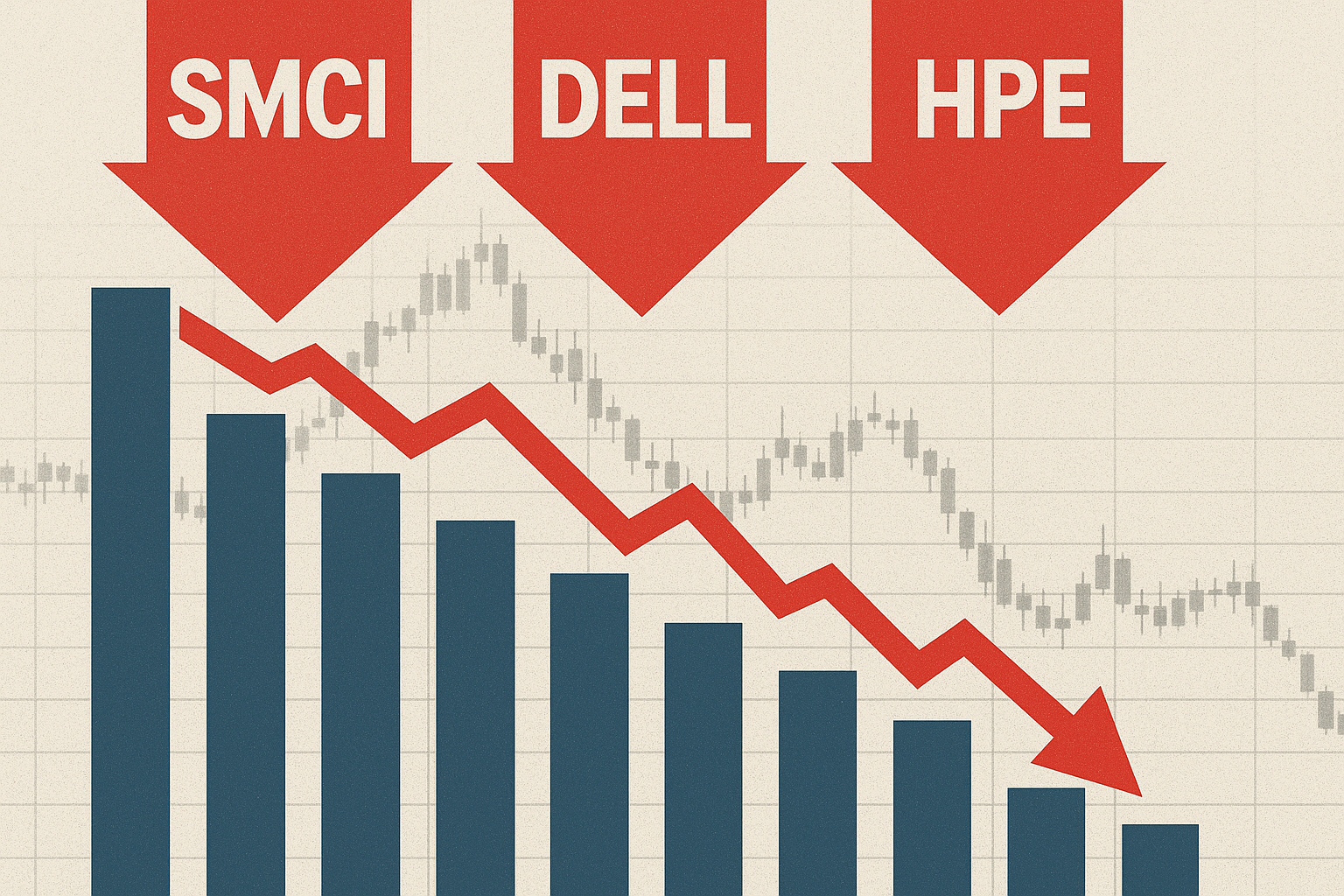
In the high-stakes world of AI-driven data center infrastructure, the competitive landscape is evolving at breakneck speed. Super Micro Computer (NASDAQ:SMCI), once considered the dark horse of the server market, now finds itself battling not just to retain its spectacular growth, but also to protect its margins as industry behemoths Dell and Hewlett Packard Enterprise (HPE) accelerate their push into the AI hardware space.
Super Micro Computer: From Underdog to Market Star
Super Micro Computer, better known as SMCI, built its reputation by offering highly customizable, cost-efficient server solutions long before the AI boom began. Its flexible business model—focusing on rapid design cycles and tailor-made hardware for cloud, enterprise, and AI workloads—catapulted it from a niche player into the mainstream. The AI revolution, powered by demand for GPU-intensive workloads, turned SMCI into a stock market sensation, with its shares surging more than 1,000% over the past two years.
But the AI gold rush has a way of attracting bigger players—and SMCI’s record growth has not gone unnoticed.
The Dell and HPE Offensive
Dell Technologies and Hewlett Packard Enterprise (NYSE:HPE) are legacy giants, controlling vast swathes of the global data center and enterprise server markets. For years, both companies were perceived as slower-moving incumbents, hampered by bureaucracy and legacy contracts. But 2024 marked a turning point: both companies, flush with cash and re-energized by AI, began rolling out their own high-density AI servers at scale.
Dell ramped up its partnerships with NVIDIA, offering full-stack AI solutions—from hardware to software orchestration—bundled with global service and support. Meanwhile, HPE acquired several boutique AI infrastructure startups and leveraged its GreenLake cloud platform to make AI hardware more accessible and less capital-intensive for enterprise clients.
SMCI’s Margin Pressure: The Numbers Tell the Story
SMCI’s financials remain impressive, but cracks are starting to show. For the most recent quarter, SMCI reported revenue of $3.8 billion—up 42% year-over-year—but its gross margin fell to just above 15%, down from 17% the previous year. The culprit? Intensifying price competition, rising component costs, and aggressive discounting by Dell and HPE to win AI-hungry clients.
According to industry analysts, Dell and HPE can afford to undercut SMCI because of their scale, diversified product lines, and access to global supply chains. SMCI, on the other hand, is still largely dependent on just a handful of suppliers for critical GPU components, exposing it to both price volatility and shortages.
“Supermicro’s rapid growth is a double-edged sword,” said Lisa Martin, Senior Tech Analyst at Datacenter Insights. “Their lean model let them outmaneuver bigger rivals early in the AI cycle, but as Dell and HPE ramp up, SMCI is being forced to sacrifice margin to keep up with volume.”
The Customer Perspective: Why Big Tech Is Hedging
Cloud giants and enterprise customers are notoriously risk-averse. While SMCI’s customization and speed-to-market won early deals from AI startups and even hyperscale providers, the largest customers—think Meta, Google, and Microsoft—have started splitting orders among multiple vendors to ensure supply stability and negotiate better pricing.
One senior IT buyer at a Fortune 500 company put it bluntly: “SMCI can get you the latest AI hardware fast, but Dell and HPE offer rock-solid logistics, financing, and five-year support contracts. As we deploy more AI, we’re looking to diversify our hardware partners—and that means more price pressure for everyone.”
R&D Arms Race: Can SMCI Keep Up?
Dell and HPE have poured billions into R&D for AI-centric servers, integrating not just the latest NVIDIA and AMD GPUs, but also custom accelerators and AI-optimized networking. SMCI’s strength has always been agility—but its R&D budget is dwarfed by those of its rivals.
As AI workloads become more complex, there is a risk that SMCI could fall behind in offering fully integrated, turnkey AI solutions. This could force SMCI to compete even more aggressively on price, further eroding margins.
Wall Street’s View: Growth Story at a Crossroads
Investors are beginning to factor in these risks. While SMCI’s stock remains a market favorite, the recent pullback in its share price—after nearly two years of explosive gains—reflects concerns about margin compression and the durability of its competitive edge.
Some analysts still see upside, arguing that the AI infrastructure boom is big enough for multiple winners. Others caution that if SMCI can’t maintain margin discipline as volume grows, its profit growth could stall even as revenue continues to climb.
What’s Next for SMCI?
To navigate this new reality, SMCI will need to double down on supply chain management, build deeper partnerships with component vendors, and possibly rethink its pricing strategy. Expanding its service and support offerings—areas where Dell and HPE excel—may also become necessary to defend against customer churn.
The company’s leadership remains optimistic. “Our core strengths are speed, customization, and close customer relationships,” CEO Charles Liang told investors recently. “We are confident we can continue to lead in innovation while managing costs effectively, even as the competitive landscape evolves.”
But in the battle for AI hardware supremacy, SMCI’s margin story will be closely watched by both Wall Street and Main Street.
Disclaimer: This article is for informational purposes only and does not constitute investment advice. Readers should conduct their own research or consult a financial advisor before making any investment decisions. The author has no position in any securities mentioned.
